Dr. Dave Richards on Driving Innovation in Michigan
Key Points
-
Building statewide education transformation requires coalition-building across districts, ISDs, and leaders through shared visions and collaborative frameworks.
-
Micro-schools and competency-based learning models provide innovative pathways to meet diverse student needs while maintaining engagement and rigor.
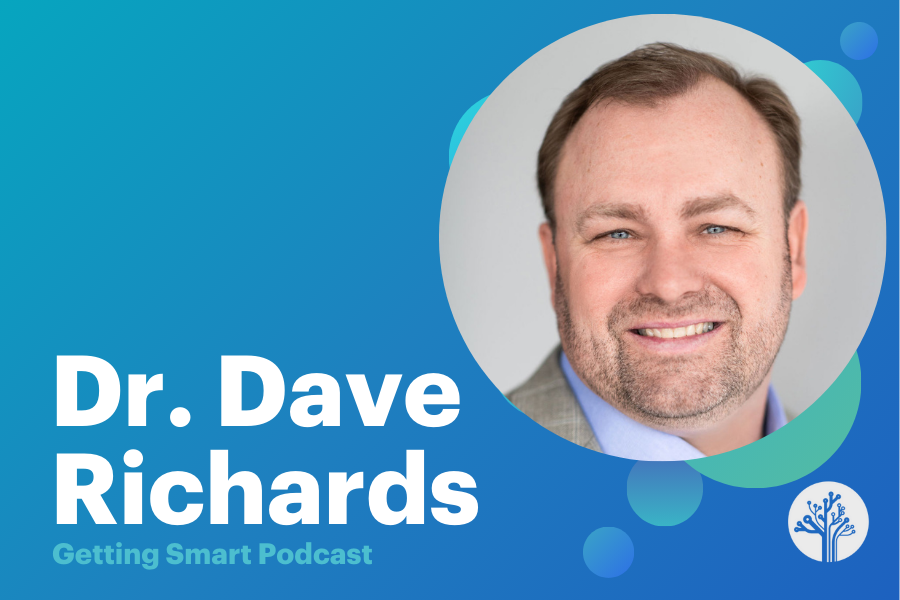
Join us on the latest episode of the Getting Smart Podcast as Rebecca Midles sits down with Dr. Dave Richards, Executive Director of the Future Learning Council. Together, they explore how Michigan’s coalition of school districts and ISDs is driving statewide transformation through personalized learning and competency-based education. Discover how member-driven networks are fostering collaboration, scaling innovation, and creating flexible, learner-centered systems. From micro-schools to professional development tools, this episode dives deep into the future of education. Don’t miss this inspiring conversation about empowering communities and reimagining learning for all students!
Outline
- (00:12) Introduction and Podcast Overview
- (04:14) Meeting Dave Richards
- (08:28) Building the Future Learning Council
- (16:24) Supporting Rural Schools
- (20:10) Professional Development Resources
- (23:59) Future Vision and Innovation
Introduction and Podcast Overview
Rebeccas Midles: You are listening to the Getting Smart Podcast. I am Rebecca Midles, and on October 27th, I’ll be facilitating a panel at the Full Scale Symposium, where I’ll be joined by leaders who are driving state-level innovation across the country. Some of these leaders will join me on the panel, and some will likely be pulled into the conversation from the audience.
To dig deeper into these journeys, I wanted to get a head start by speaking with some of these leaders, and that’s what you’re going to hear today. Today, we’re traveling to the great state of Michigan. Dr. Dave Richards is the Executive Director of the Future Learning Council Group, which we love to shorten to FLC Educators. We love to do that, and we’ll be discussing the great work happening there and how a member-driven coalition of school districts and intermediate school districts, called ISDs, are making inroads to statewide transformation.
We’ll get to this shortly, but first, Dave, we’ve known each other for over a decade, I think. I have certainly been in the work of personalized learning, as you have, for much longer. I think there may have been a fun memory that has you on a stage performance at a national conference with me.
Dr. Dave Richards: I do remember, but it was in Orlando.
Rebeccas Midles: Yes.
Dr. Dave Richards: And Virgil, our fearless leader, was behind that debacle of dragging us up on stage and, you know, checking all humility—let’s go.
Rebeccas Midles: I think there was some dancing, some instruments, right? It was a really strong metaphor.
Dr. Dave Richards: Yes. It was a very active, moving, physical activity that Virgil just didn’t seem to have any concern persuading us to get up there and get it done.
Rebeccas Midles: No, he doesn’t. That’s what’s so great about him, and I had a front-row seat to watch you all. It was great. It was lovely. All right, so this is also a time when you were superintendent at Fraser Public Schools. You know how I value practitioners in this work who have actually done the work that they’re leading, speaking into, and giving back to.
You have done this at several levels in the world of personalized learning. When you were at Fraser, it became a model for others to come and observe, come see, and visit. I think you invited everyone in. And by doing so, and by opening those doors to visit, I would say, you know, to learn alongside you, you actually probably started some of this kind of network thinking and culture for that piece. Now you’re at the forefront of the Future Learning Council, a board-driven organization, which we can talk about the board members too, of superintendents who are also members. Now you have an ISD representative as well, and they rely on being responsive. They build strong partnerships. They connect with the community, and they connect across the state.
Can you take us back to that initial meeting? What was the shared vision that compelled your group to start building a coalition from the ground up?
Meeting Dave Richards
Dr. Dave Richards: Well, I’ll tell you, as a superintendent in Michigan at the time, we started our competency-based work in 2012, and we did all of it pretty much internally. We obviously traveled around the country, met folks like you, Virgil, and others that were out there—Chris Sturgis, who were doing the work—and really started considering how to redesign our system from the inside out.
At the time, we decided that we were going to do a full K–12 transformation versus focusing on one school or one classroom. And it was a big lift. It took a lot of work. As we got into it, five or six years into it, we decided that we wanted to try to build a coalition within the state. In fact, I have the original email that I sent out to colleagues saying, “Would anyone be interested?” And they were kind of handpicked leaders from across the state in getting together and talking through what competency-based looks like. “You bring your team. I’ll have my team there. We’ll buy lunch, and let’s spend a day sharing our ideas and our best practices.” What started off as a pretty small, intimate group turned into, over the years, 19 districts.
I retired in 2018, and the group asked, “Would you continue to facilitate?” And of course, you know, it’s just—it’s a passion area, trying to drive this level of work in Michigan, not just for Fraser but for other school districts. Then the pandemic happened, and things kind of went into health and safety mode. Everyone was circling the wagons to take care of kids and staff and, you know, trying to figure out which way they were going to emerge from the pandemic. When we did emerge, that same group of leaders got together—four in particular: myself, John VanWagoner, who was at Traverse City Area Schools; Chris Timmis at Dexter; and Kelly Coffin, now at Farmington.
We got together and just said, “Let’s relaunch it.” Michigan Virtual has been a huge part of that with our work, sponsoring our work and supporting my time and energy to do it. In 2021, we thought maybe we’d get five or ten districts that would be interested in doing this. That number went to 25 within six months, and it really showed us that there’s such a huge appetite right now from district leaders and ISD leaders who are past the “why” and into the “how” and “what.”
They really want to get together and talk about, “What does this look like in our school district?” Everyone has used the term “personalized learning” almost to the point where it’s lost its shine. What we needed was proof of concept. We needed to see examples, and we needed to help each other design what those models might look like. Regardless of where you come from geographically, how do we do this work? So from the fall of 2021 launch to today, now we’re over 70 organizations—public schools, charters, ISDs—and we meet every month. We average about 100 individuals at each monthly meeting, and it’s growing. I mean, this summer has, I think, brought four more ISDs on this summer, along with a couple more school districts, and it’s really just been a coalition of the willing, Rebecca. I mean, you’ve had the opportunity to be a part of this work for the last 18 months or so, and I think you’ve seen that there’s an authentic desire to do better for kids. We’re excited about where it’s at and some of the work that’s ahead of us.
But I would say the greatest challenge in doing the work, both as a superintendent and now as facilitator and executive director of this group, is that we’re getting to the point where people need to see the “how” and “what.” We need to have proof of concept, and that means a lot of systems conversations. It’s talking about how to build a new system while also trying to maintain and survive an existing system. And that’s been really good conversation, but also you see the human side of this work, and it’s challenging.
Rebeccas Midles: Yeah, I thank you for highlighting that. I did get to see a lot of that journey—not all of it, certainly—but the pieces that I remember coming in and just really stand out to me were that level of commitment and that network that I think was certainly there before the pandemic and probably got stronger during the pandemic.
Where you’re really sharing in story and to have a group that size now, even more so as it’s gotten bigger, to meet and commit to showing up to be in community once a month during the school year—that’s quite a commitment, and that’s a member-driven choice. I mean, sometimes they can’t make it; maybe they watch it later. You have a recording that you do. You have people sometimes call in because it’s not always easy to get to from different places at different times of the year. But you definitely feel that commitment. It’s people who want to be there; they’re excited to see one another. And it’s really done a lot to shape, I think, the culture and people sharing what they’re doing well and what they would like help on. You’ve done a great job. It’s really…
Dr. Dave Richards: Oh, thank you. You know, it’s interesting—we’re seeing this waterfall effect by leaders too, where they’re replicating the work at the local levels. ISDs are considering standing up their own FLC-ish type of group to talk about innovation learning. You know, we’re maturing to the point where we’ve got to start differentiating with the group now because we need to break it into cohorts and start thinking about giving a different type of work at each of these meetings because districts are at such different places.
But what’s interesting—and this was a big part of the development in the beginning—we were laser-focused on the superintendents because we knew we had to build their capacity to lead innovative work. Not just shiny-object technology work, but true instructional design work. And a lot of superintendents aren’t always comfortable with that, especially when you’re future-scaping and talking about, “Hey, where will learning be three years from now? How do we design for that?” Superintendents would literally call me on their way home and say, “I’m halfway home. It’s a two-hour drive. I’ve had two phone calls from board members. I’ve had an expulsion that I have to deal with. I’ve pretty much forgotten half of what we talked about today. Can I start to bring my team to these meetings?”
And we said, absolutely. You bring whoever you need to bring that’s going to help you bring this vision forward because—and you obviously have facilitated a lot of these conversations—developing that shared vision is critical in helping a district to have the courage to do this work, to go forward. When it’s a single person trying to lead this, even if it is the superintendent, that’s very difficult. You have to have everyone talking about, “What do we expect from student learning? What will success look like in our district?” And I think that was the powerful part of it. Once we opened that up, then districts were like, “Okay, now we’re ready to come in. Let’s talk this through.” And it’s more than just sit-and-get; it’s truly getting in there and workshopping ideas, doing designs, and creating at the local level what they’re seeing happening across the country.
Building the Future Learning Council
Rebeccas Midles: I can certainly hear your past experience as a superintendent in that share. And I think—you and I have been at the leadership level for districts—and how powerful it is to have a team because it really is a shared ownership, and it just helps get things done. People feel like they’re a part of that work versus having it done to them or for them, but with them. I think that’s super powerful that you highlight that.
We also know that superintendents sometimes don’t stay, and so you want that work to be rooted before that happens. And having that group come in is really important for that sustainability.
Dr. Dave Richards: Well, what’s interesting too is that we’re kind of developing our farm club, our bench team, because we identify aspiring leaders in the room. And then as positions open, it’s like a sticky vision when they go from one district to the next. Now they’re taking the FLC with them to that next district. So their existing district is a part of the FLC, and now their new district is also a part of it. And the person who was an assistant superintendent has become a superintendent. Now you start building real mass—critical mass—in the state. The FLC probably represents four to five hundred thousand students in that group, and there are only 1.4 million in the whole state. So it’s pretty incredible. And we’ve done no advertising. This has only been by word of mouth and by colleagues talking to one another and saying, “You’ve got to get in this room. You want to be a part of this conversation.”
And we take a very strong position on saying our motto is, “Build nothing for us without us.” We want to take back the conversation around where learning is going in the state of Michigan, and it should come from the field. We just need to rebuild trust with the community and business leaders so that they’ll trust us that we’re going down a path of innovation rather than clinging to and sustaining an old model that just doesn’t fit anymore.
Shorts Content
Supporting Rural Schools
Rebeccas Midles: For people who don’t know Michigan very well—and if you don’t, I’m sorry because you’re missing out—but if you don’t know Michigan very well, you’ve got that large urban, you’ve got rural, you’ve got suburban. And, of course, there are some areas in the state that are very hard to get to, and I would be remiss—those that know me—if I didn’t mention some similarities to Alaska. There are some challenges to get to some of the locations in that state.
You’ve made an opportunity for people to come on and call in, to come when they can. And like you said, you’re really trying to take it to them and collaborate. What are the things that you think, when you’re serving some of those communities that may not get a lot of access to that, like what is your commitment to increasing high-quality options for those places that are a little bit more removed, maybe have even traditionally underserved communities? You talked a little bit about it, but do you have some intentional strategies that you think others would be able to benefit from hearing?
Dr. Dave Richards: Well, I think scalability is the biggest challenge we’re facing right now. You know, in every state, there are pockets of innovation where everyone’s like, “Oh yeah, go visit this school district. Go visit that school district.” A lot of times, it’s dependent on who’s the leader, who’s that team. You know, they’ve built a strong foundation over time, but it’s not a sticky vision where there are a lot of districts doing it.
So for us in Michigan, we think about how to reach as remote as possible. How do we shorten the distance between them and this high-impact professional learning that we’re trying to put in front of them? Obviously, we’re leveraging Zoom, giving them as much opportunity as possible. They don’t want to drive—I mean, you could drive nine hours in Michigan to get to a meeting. It’s that far apart, right? That’s impossible for a leader to be able to do that on a monthly basis.
The second part of it is—and this is where I think the conversation with Getting Smart is right now, along with Michigan Virtual—how do we develop a portal of resources? And we always use the term “two clicks or less,” meaning that if I’m a leader and I’m trying to find access to something, I don’t want to go on an Easter egg hunt. I want to be able to go to a repository of resources that are directly related to personalized, competency-based learning and have access to those and answer questions. And obviously, with AI, bots, and everything else right now, it’s ridiculous that we don’t have something that’s at the fingertips of every leader.
If the FLC can serve as a clearinghouse or a gathering resource for that, that’s fantastic. Why would we not do that so that every child has the opportunity to have a leader who can get easy access to that? What we have to take away are all the invisible turnstiles that people run into around innovation. You know, if you’re trying to do it and you’ve got a million other things on your plate and you can’t take a half an hour because you’ve got a lot of other pressures, you’re not going to do it. And so it doesn’t happen. Then another year goes by, and another year goes by. Meanwhile, those kids are graduating and going through the system. We’re shaking their hand and sending them off the stage, and they’re not ready.
So what can we do to really provide resources just in time or as a repository with easy access? That’s part of our work—building that type of tool to make that happen for districts.
Rebeccas Midles: You are always paying attention to the newest trends. You help me as well, and we have such great conversations because of it. But what’s a trend or new idea you’re seeing that you think will become central to that next wave of what we’re referring to when we say innovation?
Future Vision and Innovation
Dr. Dave Richards: AI obviously is out there, and I’m not going to talk about it because there are a million other people talking about it. But I would say structurally—and this is a lot of work that you’ve done at Getting Smart—I think micro schools are like cracking the code. I think that’s a great way.
I mentioned Fraser earlier. We did a K–12 change to move to competency-based learning. It took a lot longer to make that happen because we were doing full scope and sequence—everything within the district. Moving 300 teachers versus moving five teachers, right? The micro school idea, to me, opens the door to on-ramp and to innovate without the level of disruption a lot of district leaders are afraid of. There’s an insecurity with doing that level of scale.
How can we help people understand what the power of a micro school could be? I think about examples of choice. Everyone’s comfortable with choice right now. You can have choice inside the campus. You can have three micro schools operating under one roof. The kids can still play football together, they can still be in band together—you just don’t have bells. And some kids are opting into a traditional model, and other kids are taking, you know, a career technical education model that’s competency-based. They’re taking a performing arts model that’s competency-based.
If I were still sitting in the chair, I guarantee you that’s where I would be living for our kids because that’s the fun. I mean, our goal is to drive engagement, right? Get kids where they’re running into the building, not running out of it. And if you can create opt-in learning experiences, parents are going to love it. Kids are going to love it. We’re at that point where it’s a non-negotiable. We have to figure out how to make it happen. So if I’m talking to any leader nowadays, I say, do your homework on micro schools. Dig into that, and then go through a reflection activity, a design sprint—whatever you’ve got to do—to say, “How could this help our kids?” And have fun with it.
Professional Development Resources
Rebeccas Midles: I love the way that you frame it—the way I prefer it to be framed—because I think there’s a lot of misunderstanding about micro schools feeling like a private or exclusive or very small or nano concept, or only applicable in a certain context. But really, what I see as the strength of it—and what I think you just did a great job of explaining—is how it can be used as an innovation lab within your own comprehensive district or comprehensive school system to try out things that you know to be great for kids, but your system might create obstacles for.
What are some ways that you could really start to do some of that innovative work? People can be a part of it, they can see it unfold, and those things can also be scalable. What you find works there—how can that then start to come out across the whole school? And maybe a micro school is needed for a certain interest or context, but what you learn or the strategies you apply there actually transfer out and should show up across your system if you know they’re great for kids. I just wish more people understood that. So wonderful—thank you for highlighting that, Dave, as usual.
Dr. Dave Richards: You know, here’s the crazy part—and I think this has been part of what’s held us back—we try to innovate within a system that was designed to sort and select.
Rebeccas Midles: Right.
Dr. Dave Richards: So why not hit the easy button? Say, “Well, we’re going to leave the sort-and-select one if that’s truly where you want to be—mom, dad, child—you can still opt into that. But we’re also going to create this really innovative, competency-based model that says, if you can complete Algebra A and Algebra B in a shorter amount of time, we’re going to allow you to move faster. We’re going to unlock work-based experiences for you. We’re going to create pathways for you.”
And what ends up happening is they’ll wean off of that traditional safety bubble—the old game—and they’ll say, “I’m passionate about career and technical education,” or “I’m passionate about health sciences. I want to be in that micro school. I want to be a part of that community.” And they can still stay with their friends, play football, be in the band, and all that. But leaders get so fixated—and this is a big challenge—on, “I have to make it fit within what I know.” And it’s very difficult to do that because you’re still worried about bells, you’re still worried about buses, you’re worried about months.
And that is the hardest path you can go versus saying, “How do we design and become architects of learning?” It’s not that our schools are broken, but we need to design new models and be creative with it. And I think micro schools, to me, that’s where I would spend a good semester with my administrative team just digging in and saying, “What are the possibilities for us? What could we do for our kids if we really pushed this conversation?”
Rebeccas Midles: That’s wonderful. Thank you, Dave. As always, I often feel that I wish we were recording our conversations—and we have been lucky enough, I think, to have so many of these kinds of conversations throughout the month—but I’m glad we captured this one. More to come, I predict. So thank you for joining us today.
Dr. Dave Richards: Oh, thank you for doing this. Great work at Getting Smart.
Guest Bio
Dr. Dave Richards
Dr. David M. Richards is a nationally recognized education leader committed to transforming K-12 systems into personalized, competency-based environments that prepare every student for a dynamic future. He currently serves as the Executive Director of the Future of Learning Council (FLC)—a coalition of more than 70 Michigan school districts and charter networks reimagining education through collaborative innovation. Dr. Richards brings deep experience as a former superintendent, high school principal, chief technology officer, and computer science teacher. His leadership journey is marked by bold, system-level change—most notably as Superintendent of Fraser Public Schools, where he launched one of Michigan’s earliest district-wide shifts to competency-based learning beginning in 2012. Under his guidance, Fraser became a leading example of what’s possible when schools center learning around student mastery, voice, and choice. In his role with the FLC, Dr. Richards partners with school leaders to design next-generation learning models that are student-centered, future-focused, and equity-driven. He is a frequent contributor to national conversations on innovation in education, serving as a strategist, speaker, and thought partner for districts ready to lead transformative change.
Links
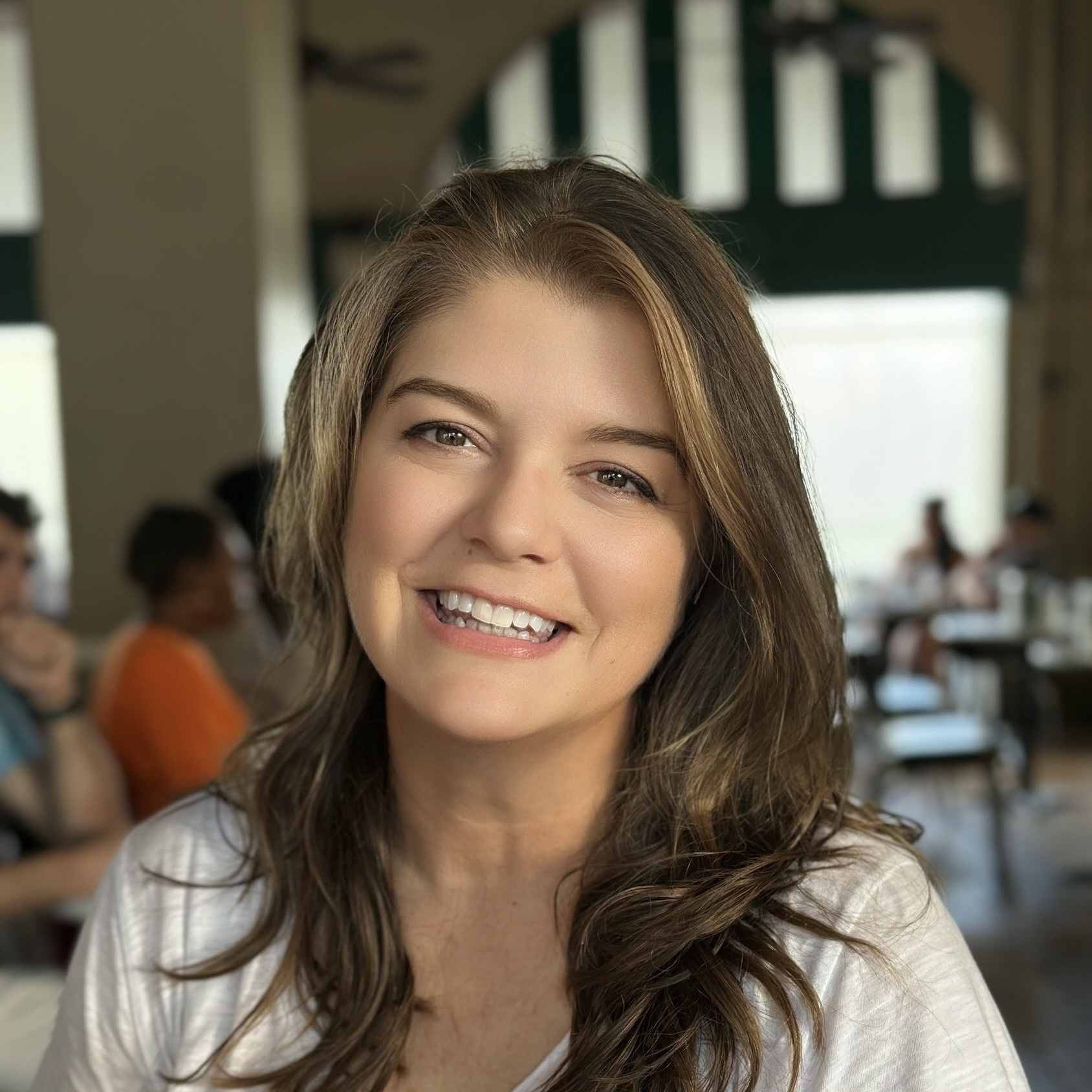


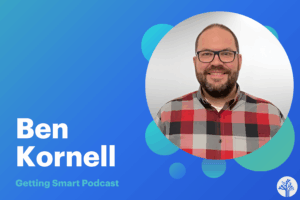
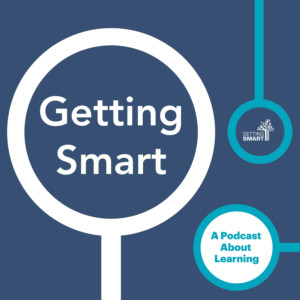

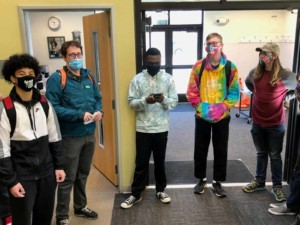

0 Comments
Leave a Comment
Your email address will not be published. All fields are required.